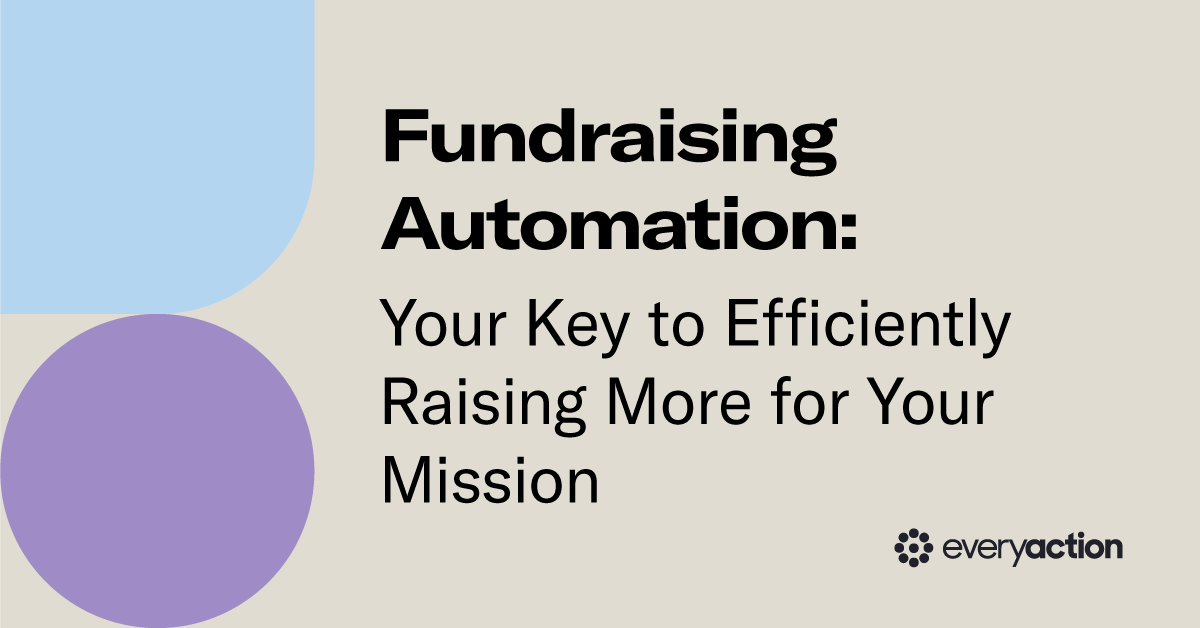Fundraising Automation: Your Key to Efficiently Raising More

Once fundraisers are equipped with accurate data from predictive analytics, the next step is putting that data into action. Automating messages to steward supporters along a multi-directional donor journey will help you to fundraise as efficiently and successfully as possible.
Fundraising Automation for a Donor-Centric Journey
In this new view of the donor journey, fundraising automation is what takes your work from fundraiser-centric to donor-centric. In the past, you may have begun a fundraising campaign by saying, “it’s July, so it’s time for the sustainer invite, because this is when we always do the sustainer invite.” Moving forward, fundraisers will need to make data-informed decisions about the right time to make the right ask of the right supporter, so instead you’ll say, “it’s July. Susan’s predictive analytics indicate she has a really high score and is likely to become a sustainer, so we need to ask her this month.” Automation is the way you’ll deploy that right message to that right supporter, at the time that’s right for them.
Fundraising Across Channels with Automation
Some development teams have experience using fundraising automation in limited ways—for example, many organizations currently run an automated welcome email series and an automated lapsed credit card email series. However, fundraisers risk leaving money on the table if they don’t evolve to use more automation that takes programs across channels. In the future, automation won’t be limited to email or online channels—it will expand to include channels like direct mail, telemarketing, events, volunteer management, and other forms of engagement, on top of everything in digital and on social.
Automating for the Future
This is a very different process than many fundraisers have used in the past. Perhaps, for example, your nonprofit always historically did one kind of messaging to your whole donor file at a specific time of year, like back-to-school messaging. Now that you have access to more accurate predictability-driven data and you can send out more automated fundraising messages with less effort, many fundraisers can optimize processes by testing back-to-school messaging and only choosing to send it to supporters who respond. That efficiency frees you up to target your non-responders with different messaging, and you can measure those results and keep improving upon them.
Moving forward, fundraisers need to adapt to the fact that most of your “doormat donors” are living lives across channels. This means to reach them, you’ll need a system that you can set up with fundraising automations to run independently across channels. It should empower you to collect data, interpret it with predictive analytics, and identify triggers for the right automations to run at the right time. But it can’t stop there: next, your system has to document which messages have and haven’t elicited supporter responses. That way, you can test messages with greater accuracy, and more quickly identify the types of messaging that actually help you successfully raise funds for your mission.


